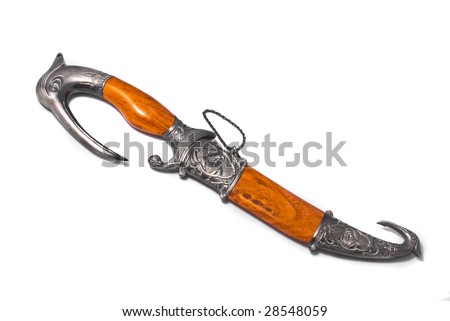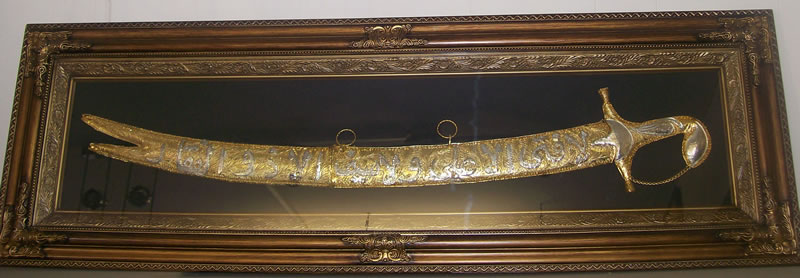Mosamania
ELITE MEMBER

- Joined
- Jun 19, 2011
- Messages
- 10,171
- Reaction score
- 5
- Country
- Location
I thought I would bring some Ancient Arabian history and culture to this forum since and shed some light on ancient culture and civilizations that have lived in the Arabian Subcontinent regarding weapon making in particular since this is a military pictures thread:
1-Here is an interesting bronze age Sabaean dagger/sword that belongs to the Sabean Dynasty which ruled Southern Arabia (Yemen, Oman and one third of current day Saudi Arabia). You can find mention of this Dynasty in the Quran where King Solomon peace be upon him have played a game with this Dynasty's Queen regarding her throne:


2-Traditional Central to Western Arabian Ancient Dagger. This is also from the Pre-Islamic era:

This is the dagger in its sheath:

As this type of Dagger evolved it started to take different shapes and forms from A Soldier's side arm to a mainly decorative and ceremonial looking ones over the years and many types of it came into being:


This type of Dagger/knife is known as the Shafrah (The word Shafrah is still used in some parts of Arabia as a meaning of the word Knife Shafra literary means "That which is sharp")

(I couldn't find enough material so I had to use this sale site for the pictures)
(To be continued)
1-Here is an interesting bronze age Sabaean dagger/sword that belongs to the Sabean Dynasty which ruled Southern Arabia (Yemen, Oman and one third of current day Saudi Arabia). You can find mention of this Dynasty in the Quran where King Solomon peace be upon him have played a game with this Dynasty's Queen regarding her throne:
2-Traditional Central to Western Arabian Ancient Dagger. This is also from the Pre-Islamic era:

This is the dagger in its sheath:

As this type of Dagger evolved it started to take different shapes and forms from A Soldier's side arm to a mainly decorative and ceremonial looking ones over the years and many types of it came into being:


This type of Dagger/knife is known as the Shafrah (The word Shafrah is still used in some parts of Arabia as a meaning of the word Knife Shafra literary means "That which is sharp")

(I couldn't find enough material so I had to use this sale site for the pictures)
(To be continued)




 )
)















